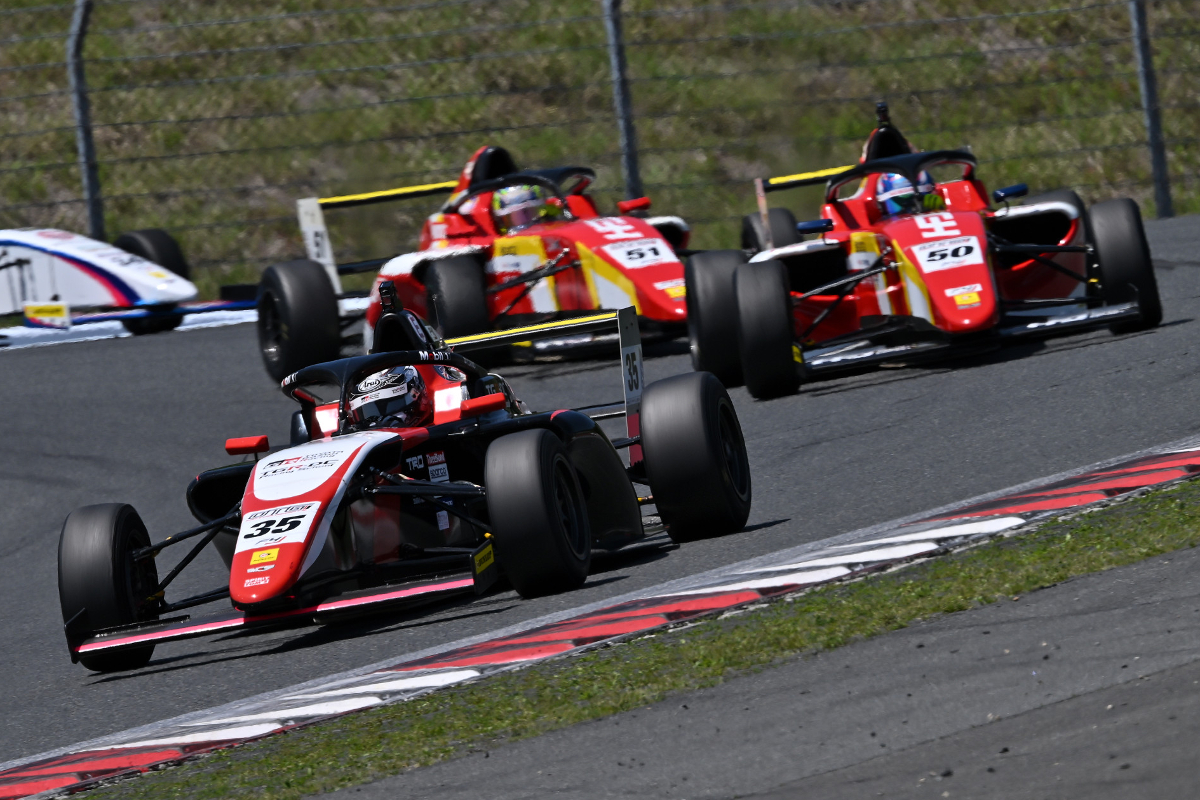
Photo: Japanese F4
The Japanese Formula 4 paddock was hit by engine issues in last weekend’s season opener at Fuji Speedway, leading to 10 drivers failing to start the event’s second race.
Every car in the field is fitted with a two-litre naturally aspirated engine built by TOM’S, a new design for this year to succeed the unit that had been in use since the championship’s creation in 2015.
The decision to change chassis and engine for 2024 was announced 21 months ago, along with specifications for the latter. In addition to being designed in a way that it can be compatible with hybrid technology in the future, the engine is 20 horsepower more powerful than its predecessor at 180hp.
However it has so far proven unreliable, with one of the engine’s pistons breaking a problem encountered by seven at Fuji. Since that was occurring as early as practice for some, they were able to change engine but there were reports of issues with replacement units too.
Yuki Sano, Yuto Nomura and Ryota Horachi filled the race one podium, but following a paddock meeting their teams withdrew them from race two due to reliability concerns. Toyota parked its four juniors, B-MAX Racing withdrew its three cars (two of which were driven by Honda juniors), Ponos Racing took its two cars off the grid and Fujita Pharmacy Racing did the same with its sole entry.
After that race, which still had 24 starters, Japanese F4 race director Naoki Hattori – a two-time Super Formula championship runner-up and ex-CART driver – explained to media that TOM’S had run out of time during the event to figure out the cause of pistons breaking since the fractures were occurring in different locations. A lower rpm (revolutions per minute) was used in the engines for race two as a safety precaution.
Hattori says it was critical for the race to go ahead since it would provide more information for TOM’S to use in finding the source of weakness in its pistons, but there is no guarantee that the issue will be resolved before round two at Suzuka on June 1/2 and so there could be reliability-induced disruption there too.